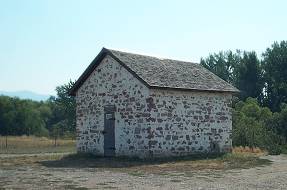Preservation is our Mission
Structures
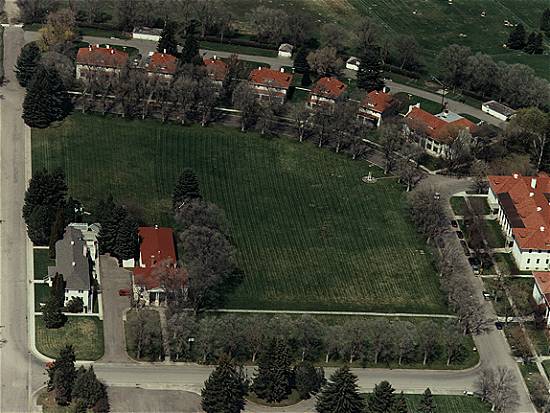
Our Structures
In April 2000, the Heritage Center received formal title to 16 acres and thirteen Historic Register buildings at Fort Missoula. The historic area now owned and administered by NRHC includes:
- seventeen acres
- the seven buildings of “Officers’ Row”
- four original carriage houses
- the parade grounds
- the original water tower
- the imposing Post Headquarters building
- and the original stone powder magazine built in 1878.
NRHC Structures
Officers’ Row
These photos describe the NRHC buildings available on Officers’ Row for qualifying groups and organizations. Space available for interested museums and nonprofit organizations ranges from approximately 2,000 to 6,000 square feet.
Officers’ Row, Buildings 27 – 33
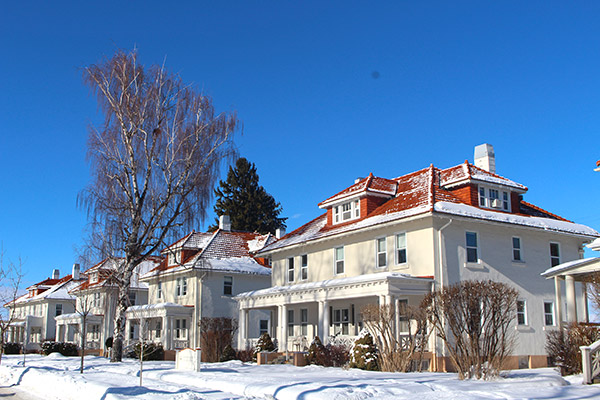
B-30 Former Commanding Officers’ Quarters
Reconstruction of Fort Missoula between 1904 and 1912 transformed the old log and frame complex into a more modern, more attractive facility. The Mission style at the height of popularity during the period was well suited to this purpose. The attractive, red tiled roofs added color but the sturdy design ethic followed Spartan military standards in the use of concrete and steel with minimal surface ornamentation.
Build in 1910 at a cost of $15,596, this two-and-a-half story single family residence was primarily designed to house the post commander or his civilian counterparts. From 1910 to 1940, more than ten commanding officers and their families resided here at different times. Most stayed at the fort a few years before being transferred elsewhere. The commanding officer and his family often hosted social gatherings while in residence at the fort.
This property contributes to the Fort Missoula Historic District listed in the National Register of Historic Places by the United States Department of Interior in cooperation with the Montana Historical Society.
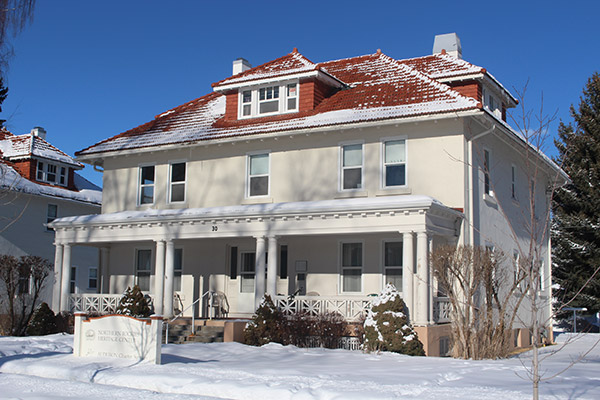
Elizabeth Countryman Building B28
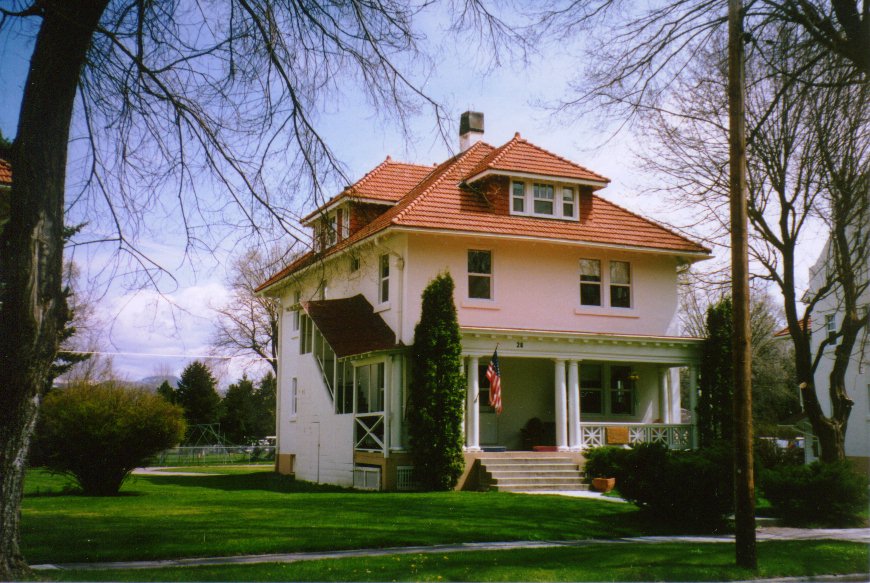
Senator Joseph M. Dixon Building B-33
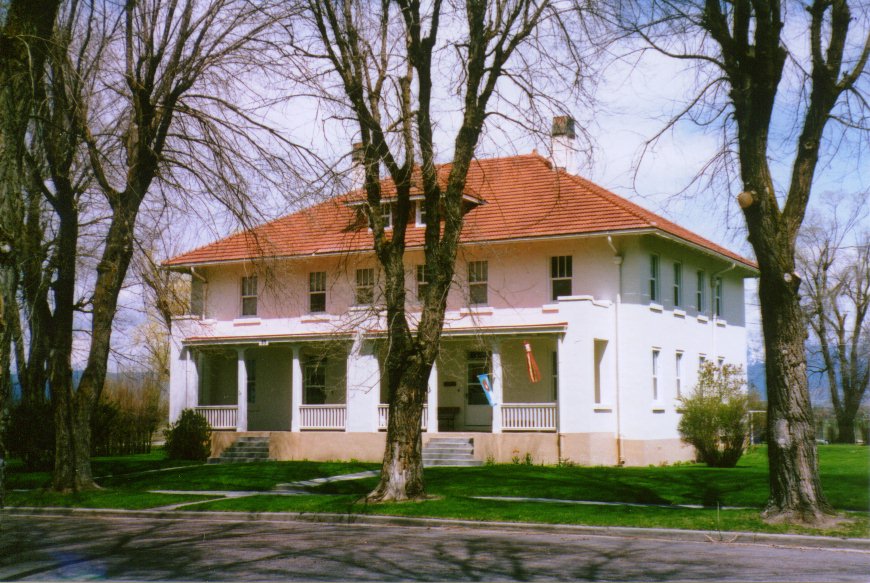
Svoboda Freedom Building
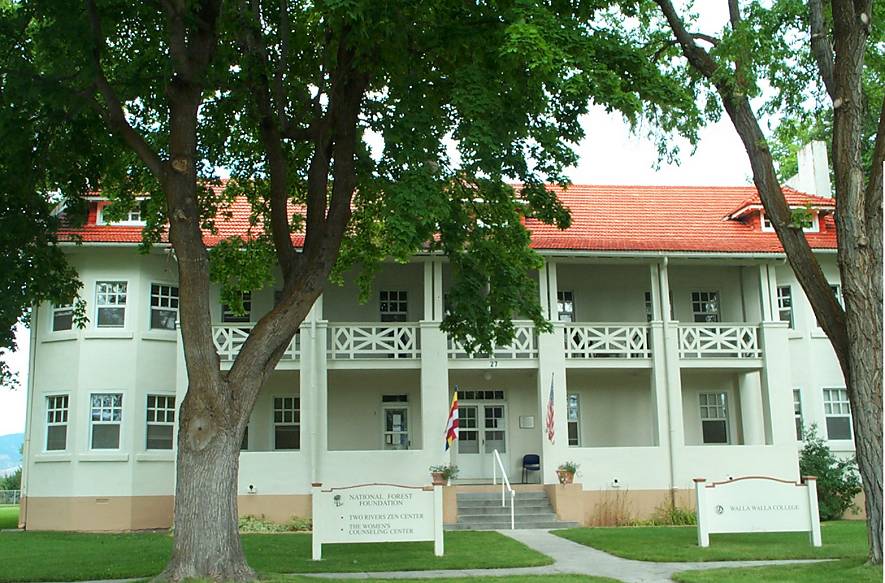
Additional NRHC Structures
Uniquely Fort Missoula
These photos describe the NRHC buildings and on the campus other than Officers’ Row. Qualifying groups and organizations may contract for short term and long term use of these facilities.
Brigader General Walter S. Johnson Building T-2 (aka Heritage Hall)
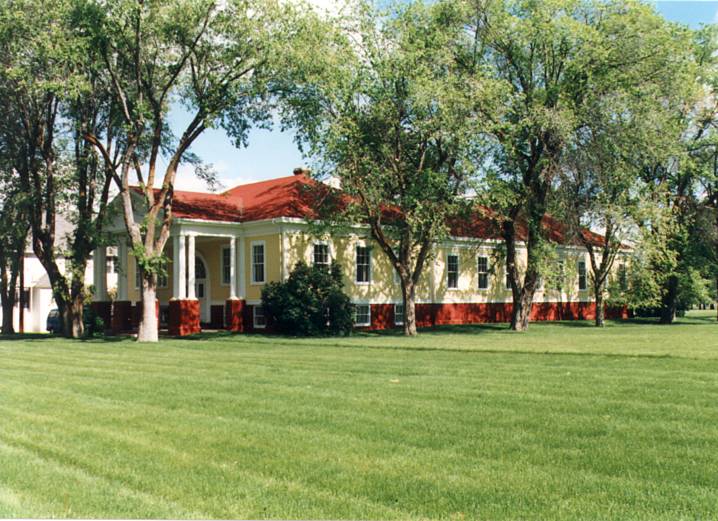
Water Tower
The Water Tower stands 166 feet high in an undeveloped southern area of the Fort. During the Fort’s use as a detention camp the Post Water Tower sported red and white checkerboard paint. The tower no longer operates as the Fort’s water source.
The Fort with no walls always commanded a wide view of the surrounding area where buffalo roamed within its borders, easily imaginable in the open space around the Water Tower. One Fort Missoula soldier recorded that he shot a buffalo from his barracks window.
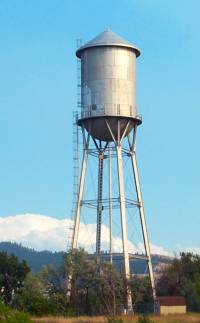
Carriage Houses
Behind Officers’ Row on F Street several carriage houses border open land with the view behind stretching to the mountains. This peaceful setting provides studio space, workshops and storage.
Perhaps these carriage houses sheltered horse drawn carriages in the early days of Fort Missoula when the hitching rings on the curbs in front of Officers’ Row were used to tie horses. The best preserved heavy metal hitching ring is directly in front of the Villa.
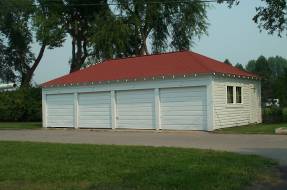
Powder Magazine
The powder magazine sits away from rest of the military buildings on the southern outskirts of Fort Missoula not far from the Bitterroot River. This original building in the fort is the second oldest, contemporary with the log non-commissioned officers’ quarters finished before it in the same year, 1878.
The Seventh Infantry built the powder magazine at a cost of $450 out of native field stone quarried at nearby “McCauley’s Bluff.” Volunteers recently restored the roof over the original larch beams which still look like new.
A powder magazine was typically built close enough to the military complex for the guards to keep watch over it, yet as far as away as practical for the safe storage of the ammunitions and small arms. Besides the munitions, it held the target frames and empty boxes which were accountable items. This powder magazine is small, intended for the the initial two-company post.
The Rocky Mountain Museum of Military History (RMMMH) leases the powder magazine from NRHC. RMMMH Executive Director Tate Jones and board member Kermit Edmunds explained their vision for exhibits within the building. Plans for exhibits include reproductions of the kind of equipment that would have been stored there. Another exhibit will tell about Horace Bivens, whose signature and rifle serial number can be found inside the building on the metal sheathing. Bivens was an enlisted Buffalo Soldier whose service included the all black cavalry and fighting in the Spanish American War. He achieved the non-commissioned officer Post Ordnance Sergeant rank in charge of the supplies in the powder magazine. He also distinguished himself as a national revolver and carbine marksmanship champion, proudly wearing his many awards.
Another “signature” at the powder magazine speaks for itself. Sgt. Bozo, a bygone post mascot dog, left his paw prints on the sidewalk.
